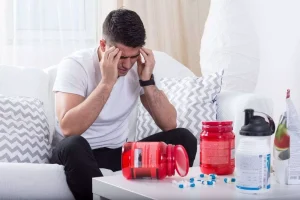
One of the most challenging times for someone recovering from drug or alcohol addiction is when they leave a residential treatment center and head back to their daily life. Without the supervision and structure of a treatment program, a person in recovery can be tempted to return to old habits. The risk of relapse is particularly high in the first few months following treatment. Studies have identified that 65% to 70% of people relapse within the initial 90-day period.
- These function as facilities where individuals who were previously homeless can live as they begin to find stability and move towards securing independent housing.
- “If there’s not a ‘perfect’ fit, you may still benefit from the structure, support and monitoring that a sober living house provides until you feel more confident in your sobriety,” says Dr. Kennedy.
- By encouraging a sense of community and togetherness, recovering people are motivated to bond with others, support each other, and continue sobriety to retain their place in the house.
- Access to counseling services, both individual and group therapy, is a key component.
Where Can I Find Sober Living Homes Near Me?
This shared experience fosters strong bonds and support networks that are invaluable during tough times. To join a sober living home while working full-time, you can communicate your job commitments during admission to ensure the house accommodates your needs. Many homes offer flexible schedules and understand the importance of maintaining employment.
The Goals of Sober Living Houses

This sense of community encourages mutual support, where residents motivate and inspire each other to stay committed to their recovery goals. A core component of sober living homes is the emphasis on personal accountability coupled with peer support. Sober living is a crucial step in this journey, offering sober house a bridge between an inpatient facility and the real world. It’s a safe space where you can reinforce the coping skills needed to navigate life without substances. Sober living homes can be a good option for individuals struggling with addiction who are looking for a safe and supportive place to heal.
How Much Does Sober Living Cost?

Share success stories, tour a facility together, and emphasize the supportive community aspect of sober living. Seeking advice from addiction professionals can also guide effective communication techniques. Many sober living homes in Los Angeles offer some or all of these services and require residents to follow an intensive schedule geared toward recovery. Some sober living homes have exercise equipment, fitness areas, recreational space, pools and cookout areas. The homes may also be near an outpatient treatment center or on the campus of residential rehab facility. Sober living homes are maintained through fees, and residents can usually stay as long as they want.

Other research cited in the report found that MAT also helps to reduce risky behaviors, including the injection of drugs that increase transmission of infectious diseases like HIV or hepatitis C. You deserve to have the best chance at a clean and sober life and doing your homework before entering a transitional home will pay off well into the future. Ensuring that the administration of an SLH or halfway house is vigilant about complying with any kind of necessary inspections is an important part of establishing its validity as a reputable residence.
A reputable SLH or halfway house should be well-maintained and have enough space for all of its residents. Don’t go solely by website pictures when choosing a facility, which can be misleading. Ask to take a tour before moving in and try to get former residents’ testimonials about what is was like living there.

Finding the Best Sober Living Home Near Me
Ensure you research homes specializing in alcohol recovery to provide him with the most tailored support. The duration of your stay in a sober living house primarily depends on individual needs. While some residents https://ecosoberhouse.com/ might feel ready to move on after a few months, others may require over a year to rebuild their lives and solidify their sobriety. Extended stays allow individuals more time to adjust to normal life in stages.

Other Sober Living Facilities
- Some homes are highly structured, with strict schedules and consistent eating and meeting times.
- There is a continuum of care in substance abuse treatment that includes sober living.
- While residents may have completed formal treatment, extended stays in SLHs allow continuous access to resources like counseling sessions, group therapy, or job training programs.
- In this kind of house, you simply pay a monthly fee for rent, maintain attendance in recovery groups, stay sober, and participate in household duties.
- Since then, homes operating under the Oxford House model have spread across the country – as of 2012, there were 1,500 homes.
- Living in a halfway house is generally cheaper than living in a residential rehab because the staff provides fewer services.
Residents should also be able to perform daily activities like bathing, dressing, and eating without assistance. And any co-occurring mental illnesses they may have should be actively managed by a psychiatrist and psychotherapist. Other admissions requirements might be that prospective residents agree to attend a certain number of 12-step meetings every week, regularly attend work or school, and consistently do in household chores. When you embark on the path to sobriety, finding a supportive environment is crucial. They’re not just a place to live; they’re designed to support your recovery and prevent relapse by providing a structured, substance-free environment.
- Ensure you research homes specializing in alcohol recovery to provide him with the most tailored support.
- It bridges the gap between inpatient rehab facilities and a return to normal life.
- Design for Recovery provides structured sober living in Los Angeles, California.
- Recovery Residences (RRs) are organized into four categories, or “levels,” by the NARR.

